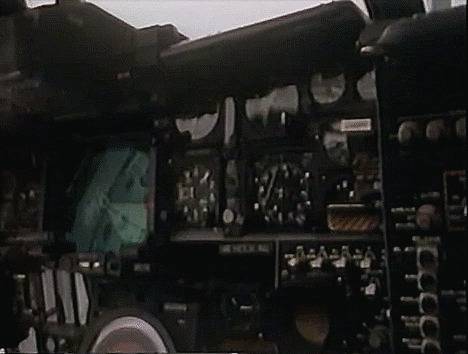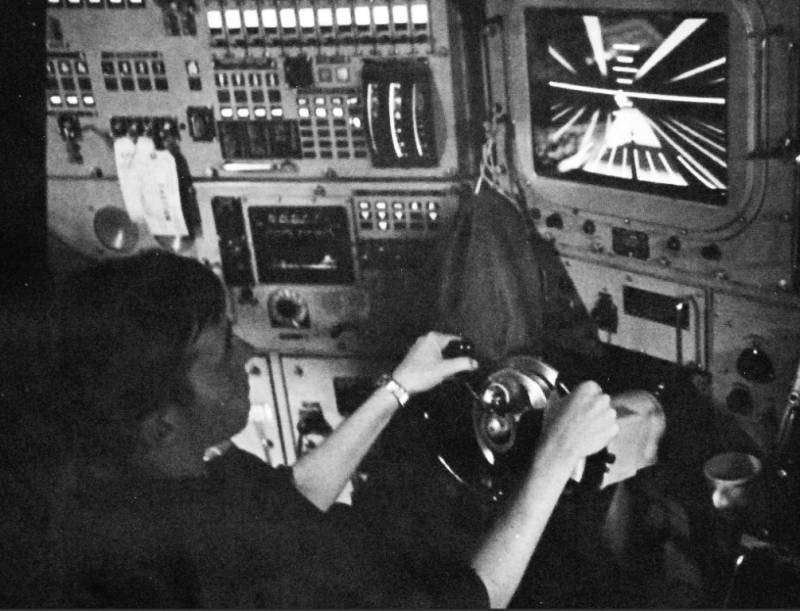Mysterious navigation screen on a Sturgeon-class submarine that shouldn't be there
We continue to look into history military equipment together with The WarZone and this time we will plunge into the underwater world. And none other than the editor-in-chief of the magazine, Tyler Rogoway, will help us in this. Here is what he discovered and wrote about it on December 1, 2019.
Photo
“When it comes to military equipment, especially from such a sensitive area as underwater, from time to time, pictures of something that you didn’t even suspect existed, literally pop up out of nowhere. Just yesterday (written December 1, 2019) Erick Moreno, founder of the popular Reddit page r/submarines, tweeted a photo showing what appears to be a CRT - a navigation system monitor mounted in the control room of a nuclear-powered submarine. Sturgeon USS Queenfish (SSN-561). The photograph is believed to have been taken during an ICEX mission in 1970.
Several sources were interviewed about the photo - retired submariners, but none of them knew about the existence of such a device.
The display looks remarkably similar to the navigation system of a Grumman A-6 Intruder attack aircraft from the same era. The display was connected to the computer of the Digital Integrated Attack Navigation Equipment (DIANE) sighting and navigation system, which at that time was ultra-modern and allowed the attack aircraft crew to attack targets at night and in bad weather, from extremely low altitude, using a radar that recognizes terrain bends.

DIANE and other sensors were tied to a screen called the Vertical Display Indicator, which was the pilot's primary instrument. The screen operated in the same manner as modern electronic flight control (EFI) systems with synthesized image systems, but in a much cruder manner. It could show the horizon, sky, terrain contours, flight altitude, angle of attack, vertical speed and heading. The system allowed for navigation and precision bombing, and the display looked like something out of science fiction. The resemblance to what we see on the Queenfish control console is very intriguing.
It is clear that such a system could look very attractive to submariners navigating without seeing the space around them. It is possible that the Navy took some of the technology from the A-6 and tied it to an integrated inertial navigation system (INS) with its depth, speed and other sensors.
Whatever the story behind this display, which looks more like a Star Wars X-Wing fighter panel than a 1960s submarine control panel, it must have been state-of-the-art technology in its class at the time. In fact, it was probably so far ahead of its time that it wasn't very effective, since we didn't see digital instruments on submarines for several decades.
Digital instruments only became standard with the advent of the Seawolf in the 1990s.
And today, the Virginia-class nuclear submarine's control panel looks more like an alien spacecraft.
These boats ditched the classic steering wheel and vertical instrument panel in favor of a pair of joysticks and an angled display panel that partially immersed the pilot in a kind of cocoon.
It is clear that the navigation display on the control panel of the USS Queenfish was ahead of its time. Eventually, the ability to process and display a lot of location data for sailors flying multi-billion dollar nuclear submarines will become a reality, but given that the photo in question was supposedly taken almost 50 years ago, it would be good to know more about how daring the system shown really was and where it came from in the first place.
If anything, the photo is yet another reminder that there are still many secrets to uncover in America's dark history of submarine warfare.
And the riddle was solved
And it was solved by our own analytical think tank, which periodically meets under the banner of The WarZone to discuss various issues. According to the collective opinion, the system was the following.
Testing of the USS Albacore, which itself was state of the art , showed that at high speed the boat reacts extremely sharply to rudder shifting, it is prone to sharp rolls, it is difficult to steer it along the course, and the usual composition of the control group of three people does not provide the required speed for executing commands. This prompted the Navy to rethink the principles of control, and in the 30s, Electric Boat developed a new control panel, called SUBIC (SUBmarine Integrated Control).
One of SUBIC's revolutionary innovations was the CONALOG (CONtact AnaLOG) digital steering assistant, which in turn was part of the Fast-Reaction Submarine Control (FRISCO) system. The system showed the helmsman on the CRT screen the course that he must maintain, in the form of an image of the "highway" under water. Depth data, information from sonars and radars were also displayed there.
The system was first installed on USS Shark (SSN-591) in 1961 and later on USS Thresher, Permit, Sturgeon-class SSN and Benjamin Franklin-class SSBN.
And now, attention, an unexpected result
It was so despised that it was specifically excluded from the design of the Los Angeles class SSN.
The operation of this system can be briefly seen in the 1968 spy-adventure film Ice Station Zebra, in which an American nuclear submarine rushes to a station drifting near the North Pole in an attempt to intercept a capsule with classified information dropped from a satellite. There are very truthful scenes filmed on a real submarine (and, as usual, completely wild episodes with Russian spies - I already added this after watching the trailer. Yeah)".
Here is such a story.






Information